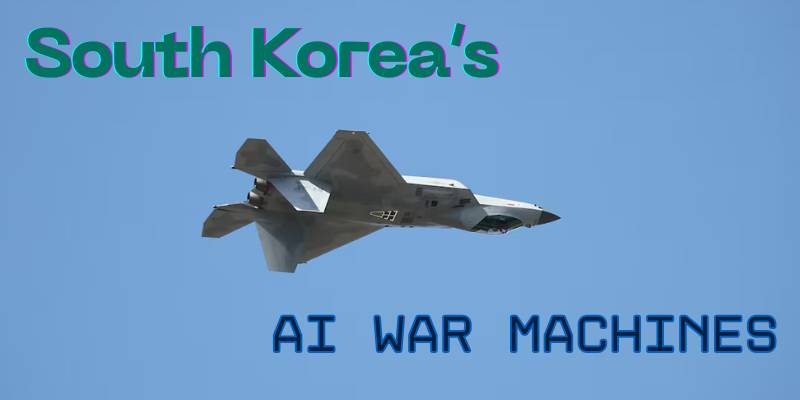The floor of Seoul’s massive ADEX 2025 exhibition is buzzing, and not just from the drones overhead.
South Korea has rolled out its most ambitious defence showcase yet — a week-long event featuring unmanned combat systems, AI-guided artillery, and robotic vehicles that could reshape how wars are fought.
As reported in Reuters, the fair brings together more than 600 companies from 35 countries, all vying for attention — and contracts — in what’s quickly becoming the new tech frontier of warfare.
What caught the crowd’s eye wasn’t just firepower, but the eerie precision of machines that think for themselves.
The local defence giant Hanwha Aerospace unveiled a self-propelled howitzer that can calculate firing solutions and reload without human hands, while unveiling loitering munitions that can identify and lock onto moving targets using onboard AI.
Those designs, inspired by the success of drone warfare in Ukraine and the Middle East, were spotlighted during live demonstrations captured by Army Recognition.
But behind the polished presentations, there’s a strategic undertone that feels impossible to miss.
South Korea is doubling down on automation as its population ages and its military faces manpower shortages.
Analysts at Trade.gov note that the government’s pivot toward robotics and AI isn’t just a fancy upgrade — it’s a necessity to maintain operational readiness in the coming decades.
The country wants to prove that it can rely less on foreign imports and more on home-grown innovation.
This push for “sovereign defence tech” is also part of a broader national agenda to merge artificial intelligence into military and industrial systems.
Seoul’s leadership laid out an entire blueprint for AI-driven military modernization last year, which outlined plans to embed algorithms in surveillance, targeting, and logistics networks — a shift detailed during a major AI summit.
The subtext? South Korea doesn’t just want to keep up with the U.S. or China — it wants to lead.
Still, amid all the optimism, there’s unease too. Human-rights groups and peace advocates have warned that the rapid march toward autonomous weapons could blur lines of accountability.
If an AI-controlled drone makes a lethal mistake, who’s to blame? Groups like Korea Peace Now argue that full autonomy in lethal systems risks creating “killer robots” that operate outside meaningful human oversight — a chilling prospect in an already unstable region.
Personally, I’m torn. It’s hard not to be impressed by the technical wizardry — drones mapping terrain in seconds, vehicles moving in perfect formation — but there’s a strange irony in celebrating innovation built for destruction.
Still, from a strategic lens, this is Korea’s coming-of-age moment in the global arms market.
If this gamble pays off, Seoul could emerge as a genuine power broker in defence exports, not just a regional player.
The bottom line? The Seoul arms fair isn’t just a show; it’s a statement. South Korea is stepping out of the shadow of bigger defence powers — and it’s doing it with robots that don’t blink.


